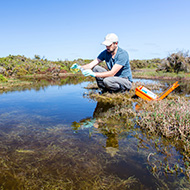Feline hypoalbuminaemia more common than thought, study finds
Feline hypoalbuminaemia could be used as a prognostic indicator.
A new study has challenged the belief that hypoalbuminaemia in cats is uncommon.
Researchers from the Royal (Dick) School of Veterinary Studies discovered that rates of hypoalbuminaemia were higher in cats than they were in dogs.
The study sought to explore the incidence of feline hypoalbuminaemia and its presenting disease categories and pathoaetiologies. The data was compared to previously recorded rates in dogs.
It also hoped to explore the relationship between hypoalbuminaemia and the clinical outcome of diagnoses.
Hypoalbuminaemia can be caused by several different disease processes. Animals which have hypoalbuminaemia may experience impaired wound healing and increased morbidity, as well as higher rates of mortality.
There have been numerous studies into hypoalbuminaemia in dogs. It is associated with a variety of diseases and has proven to be a reliable prognostic indicator.
However, hypoalbuminaemia has been poorly researched in cats. The veterinary school says that there is little understanding into the condition’s role as an acute phase protein or its prognostic value.
From their study of 1,632 cats, researchers found that 32.7 per cent of the population had hypoalbuminaemia.
It was also discovered that gastrointestinal diseases, such as gastrointestinal neoplasia, could be closely linked to the condition.
Although researchers say a retrospective study has limitations, the data may indicate that protein-losing enteropathy is more common in cats than thought. It also suggests that albumin is a feline negative acute phase protein.
Furthermore, there is potential for the severity of hypoalbuminaemia to be used as a prognostic indicator, with albumin incorporated in the feline prognostic scoring systems.
Karen Fong, lead author of the study, said: “We hope this study urges dialogue surrounding the topic of feline hypoalbuminaemia and sparks future research.
“We also encourage our colleagues in practice to consider the clinical significance of low albumin in cats, especially when gastrointestinal signs are present.”
The full study can be found in the Journal of the Small Animal Practice.
Image © Shutterstock



 A set of international guidelines for disease surveillance in wildlife has been updated for the first time since 2015.
A set of international guidelines for disease surveillance in wildlife has been updated for the first time since 2015.